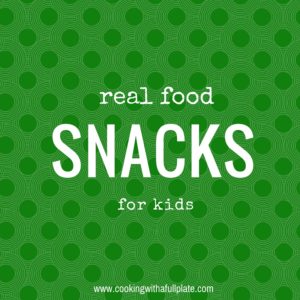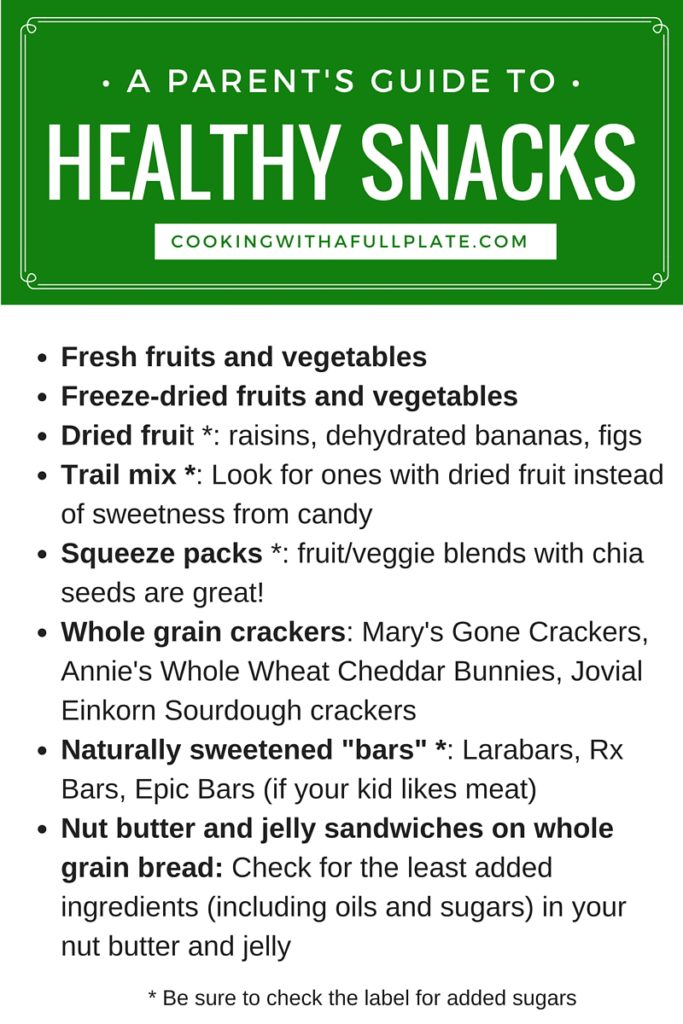Snacks. If you’re a parent you probably have at least 5 in your diaper bag, purse, or briefcase currently. If it’s my purse they’re probably also strewn everywhere in there, covered in dog hair, and at the point of questionable for human consumption (until we really need them).
Inherently, for a snack to be convenient it needs to be easy to take along, easy to eat, and keep well. After all, repacking snacks for every single outing can take more time and energy than you have to give.
Of course, in the spirit of my healthy eating mantra “whole, real, unprocessed”, I first and foremost must recommend having at least one fresh healthy thing on hand for you and your kiddos. Fruit and cut veggies come to mind as great options for this.

That said, this is real life. So to help you avoid the frantic “I have a hangry kid (or partner) who needs something NOW and why don’t I have anything” moments, I also have some real-world thoughts on how to maximize snack convenience while also pumping up the whole, real, unprocessed part of the equation.
Snacks are easy to make on your own, with a little time and equipment. That’s not what I’m going to talk about today (though I’m sure I’ll circle back to it soon) because when time is the most limiting factor (hello, parenthood), it can be unrealistic to expect you’ll actually make them and unrealistic is how I most often end up with pizza and french fries.
So what can you actually buy at the store that is a great healthy option? Here are some of the key factors:
- Naturally sweetened: Yes to dates, honey, maple syrup – No to sugar in all it’s various processed forms (evaporated cane juice, cane syrup, corn syrup)
- Whole Grain: Ideally all of the grains should be whole, at a minimum the first grain or flour listed is in it’s whole form (think whole wheat flour, brown rice). Wheat flour is not the same as whole wheat flour as it is more processed and contains less of the natural nutrients and fiber, so keep that in mind as you check out labels.
- Minimal sodium: This can be a hard one when buying packaged food because salt tastes good and it’s a preservative so manufacturers love it, but a good guideline is a 1:1 ratio between the calories per portion and the mg sodium in the food (I’m a little more flexible on this).
- Minimal ingredients: Less than 5 is an arbitrary, but ideal number. If you can’t find something less than 5, then look for ones with ingredients that you can pronounce.
Here are some examples of items that would be good healthy options based on the assessment above:

Come back later this week for even more insights on how I choose healthy snacks amidst the endless options.
What are your favorite real food snacks to give your kids (or yourself) when you’re on the go?
This post contains affiliate links. As an Amazon Associate I earn from qualifying purchases.
Instead of using salt in the food, I suggest using herbs and spices. (I recommend cinnamon, parsley, sage, oregano, basil, cayenne, nutmeg, cloves, ginger, garlic, chili powder, cilantro, cumin, mint, rosemary, sage, thyme, and turmeric. I rarely use salt when I cook my food and use herbs more often. The flavor is just as wonderful then using plain old salt.
Great idea, Grace! Those do add great flavor that cut down on the need for salt.